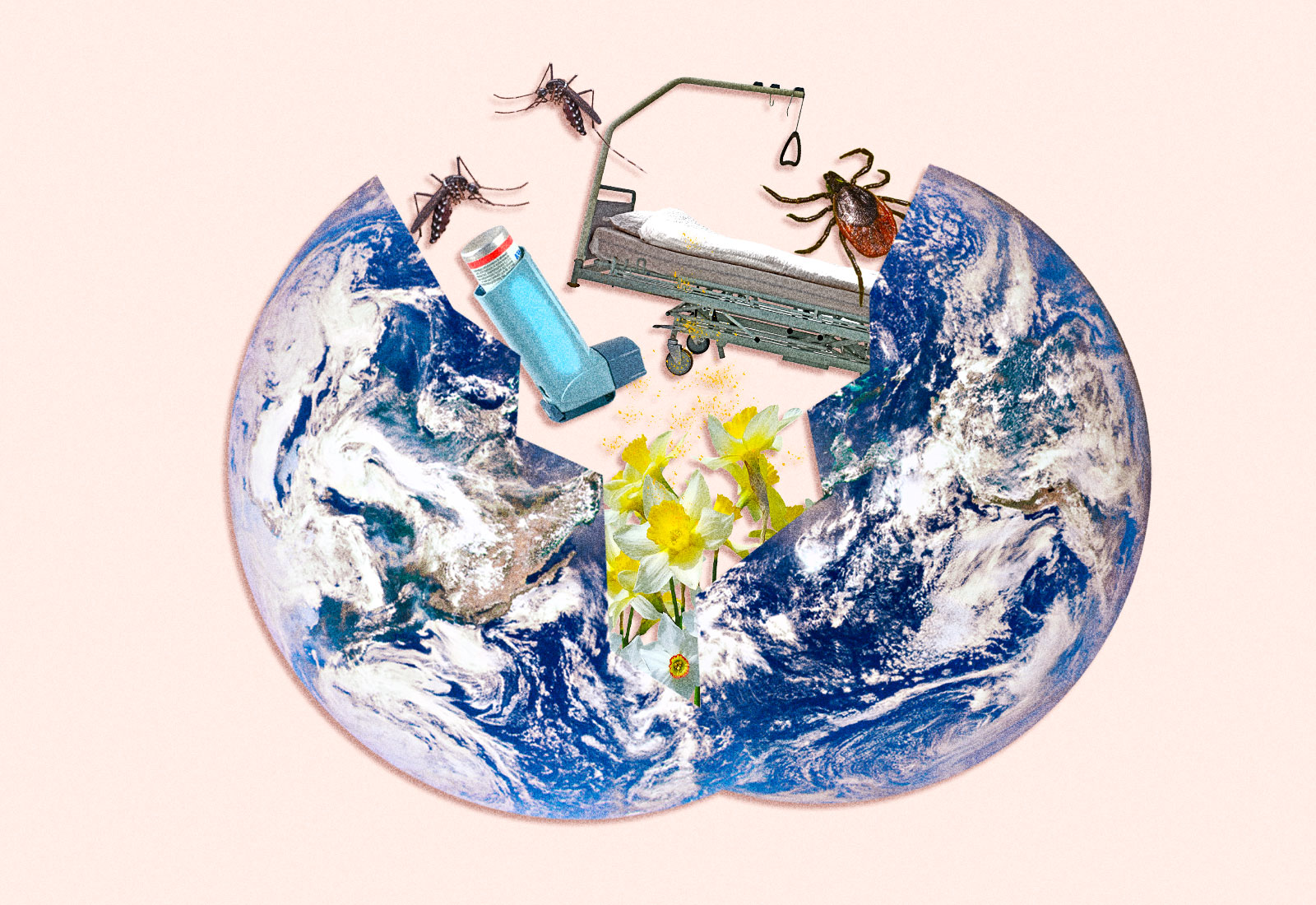Renee Salas, a physician at Massachusetts General Hospital, has been thinking about the connections between climate change and public health for a long time. In her emergency room in Boston, she sees the consequences of warming up close. Extreme heat, air pollution, vector-borne diseases, and longer allergy seasons are taking a toll on her patients. “My job as an emergency medicine doctor is to protect my patients and keep them healthy,” she said at a press briefing on Thursday. “Climate change increasingly threatens my ability to do that.”
Salas was at the briefing to weigh in on a new report that shows the health costs of climate change now far exceed $820 billion per year in the United States. One of her patients, she told reporters, a middle-aged man, visited her emergency department 30 times in one year with debilitating symptoms of Lyme disease — a tick-borne illness that can cause fever, headache, muscle pain, and neurological damage. She treated a four-year-old girl who had to seek emergency care for asthma attacks intensified by climate-driven pollen seasons and air pollution. The girl’s mother, a single parent, asked Salas for a doctor’s note so that she could show her boss that she was missing work for a legitimate reason — she had already been forced to miss three shifts that week and would likely have to miss more to care for her sick child.
“Receiving care for climate-sensitive diseases can quickly add up,” Salas, who was not involved in the making of the report, said. “We can no longer ignore these costs and they have to be factored into our decision-making.”
“The Costs of Inaction: The Economic Burden of Fossil Fuels and Climate Change on Health in the United States,” published Thursday by the Natural Resources Defense Council, or NRDC, the Medical Consortium on Climate and Health, and the Wisconsin Health Professionals for Climate Action, puts specific figures on the staggering health costs of climate change.
Some of those health costs include premature death, medical care for physical and mental health after a major natural disaster, lost wages due to climate-related illnesses, and the price of filling prescription medications for those illnesses. The report found that the diagnosis, treatment, and management of new cases of Lyme disease nationwide costs between $860 million and $1.6 billion per year. The cost of mosquito-borne West Nile virus hospitalizations, premature deaths, ER visits, and other outpatient visits totals $1.1 billion annually.
By aggregating past climate-related public health costs, the report shows that myriad medical issues brought on by climate change are already taking a financial toll on taxpayers. And researchers estimate those costs will continue to rise as climate change accelerates. “These impacts are here and now,” said Vijay Limaye, an environmental health scientist at the NRDC and a co-author of the report. “They’re not just some distant threat.”
The authors of the report readily admit that calculating the exact price of specific climate-driven illnesses is tricky. Federal science agencies like the U.S. Environmental Protection Agency track climate change impacts on public health, but the authors said that no federal agency is currently tracking the costs of those impacts. In addition, hospitals often don’t categorize certain illnesses as climate-related, and local health departments are underfunded, both of which compound the lack of data on this issue. As a result, the report says that the true health costs of climate change are likely far, far greater than $820 billion per year.
The report also found that the populations that bear the brunt of those costs are often already vulnerable to begin with — low-income Americans, some communities of color, children and pregnant individuals, older adults, and Indigenous groups. The researchers discovered that Medicare and Medicaid patients are not only especially susceptible to climate change-related illnesses, but also bear the biggest share of the costs. “Our inaction is particularly devastating for vulnerable communities, but everyone is affected in some way by those health harms and/or costs,” Donald De Alwis, research analyst at the Medical Society Consortium on Climate and Health and a co-author of the report, said.
Ruth McDermott Levy, an associate professor of environmental health at Villanova University who was not involved in the making of the report, told Grist that the findings are a valuable addition to the existing body of climate and health literature because it “puts all the financial cost to human health impacts in one place.” The report also includes a silver lining, she said. It provides policymakers, health professionals, and the public with specific actions they can take to reduce greenhouse gas emissions — from utilizing public transportation to public health professionals advocating for climate policy.
“In the end, action on climate change is a prescription for improved health and equity,” Salas, the emergency room doctor in Boston, said. “Climate action will also save us money.”



